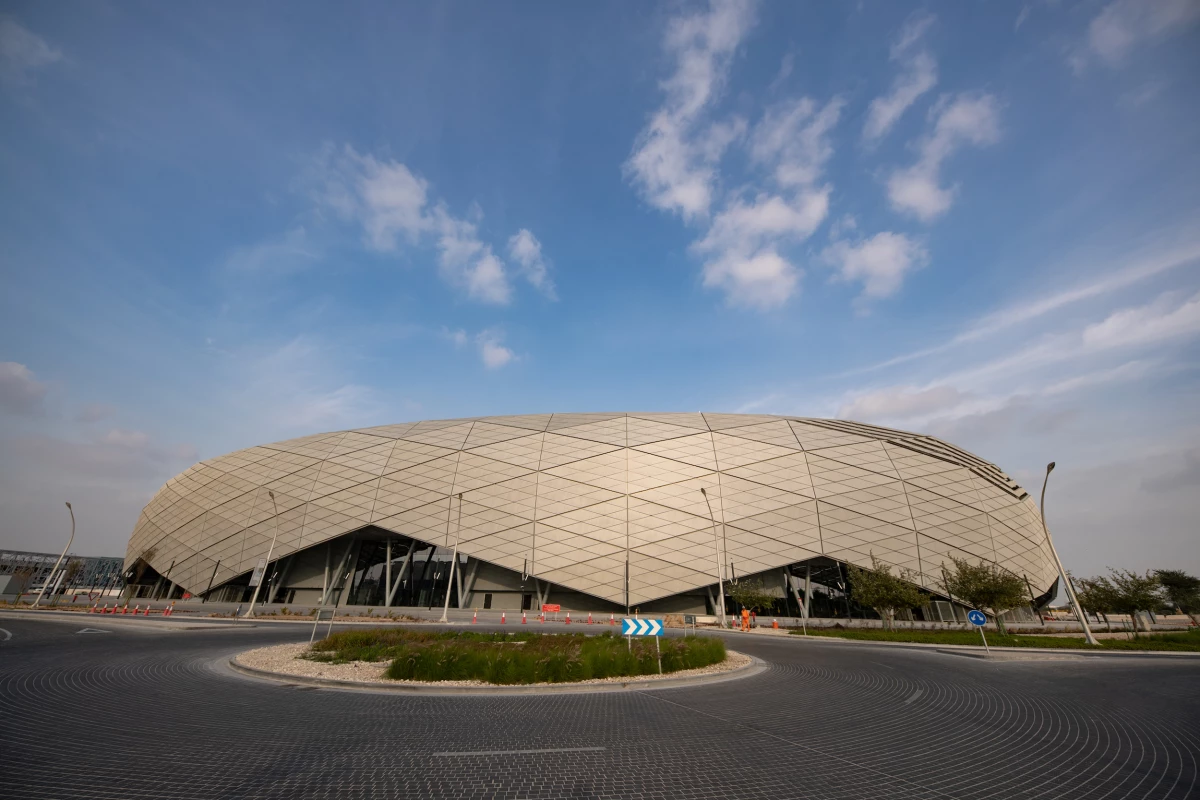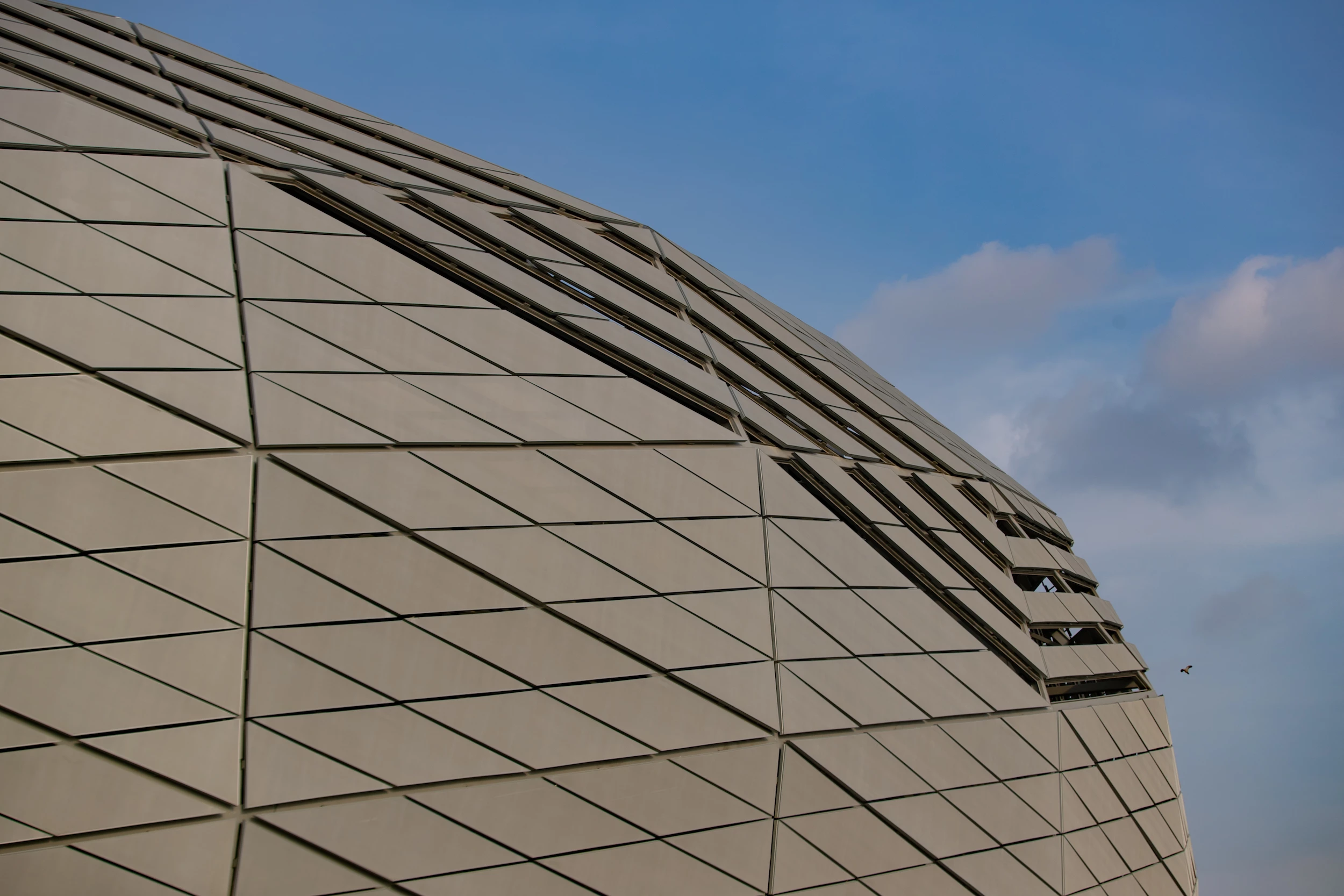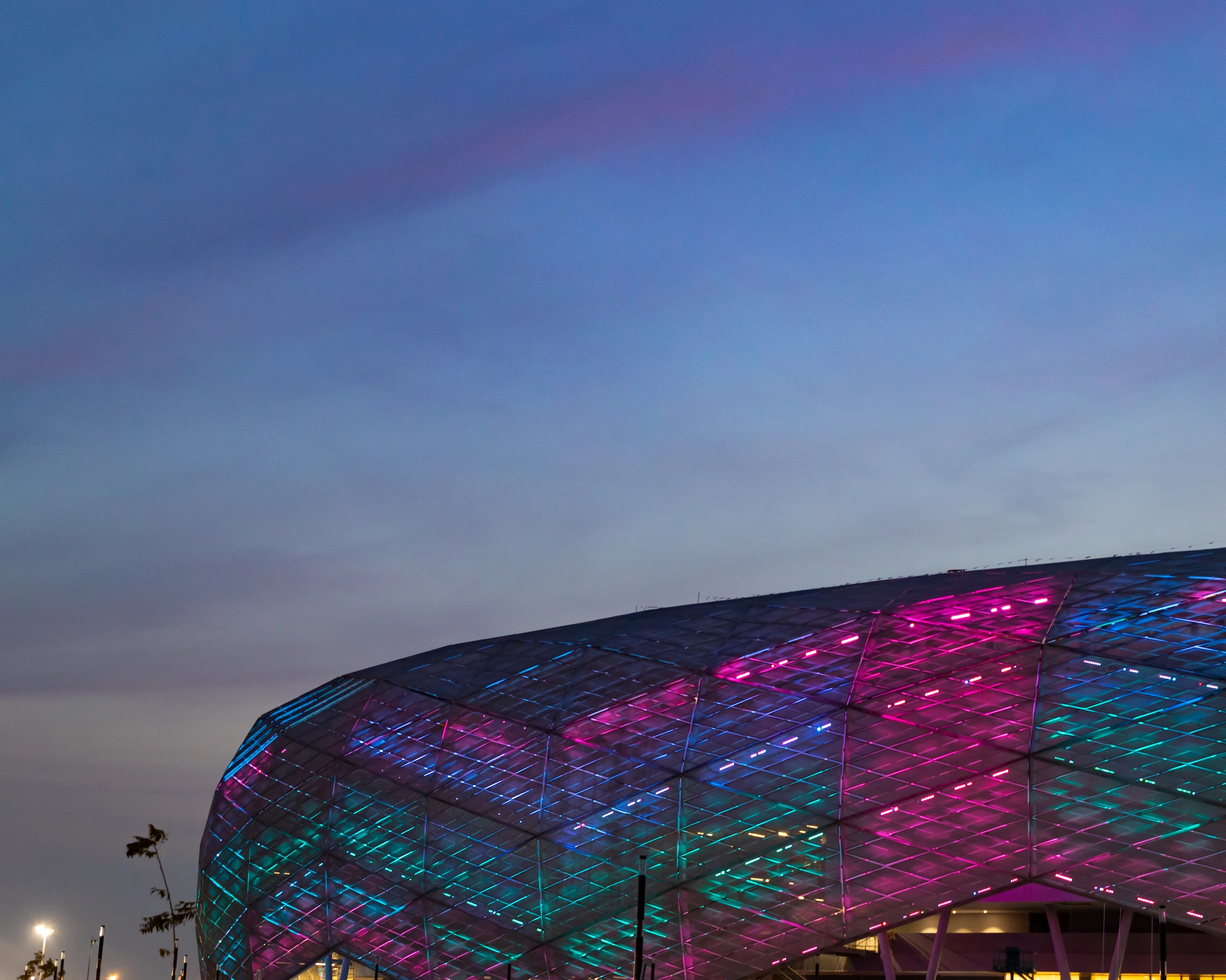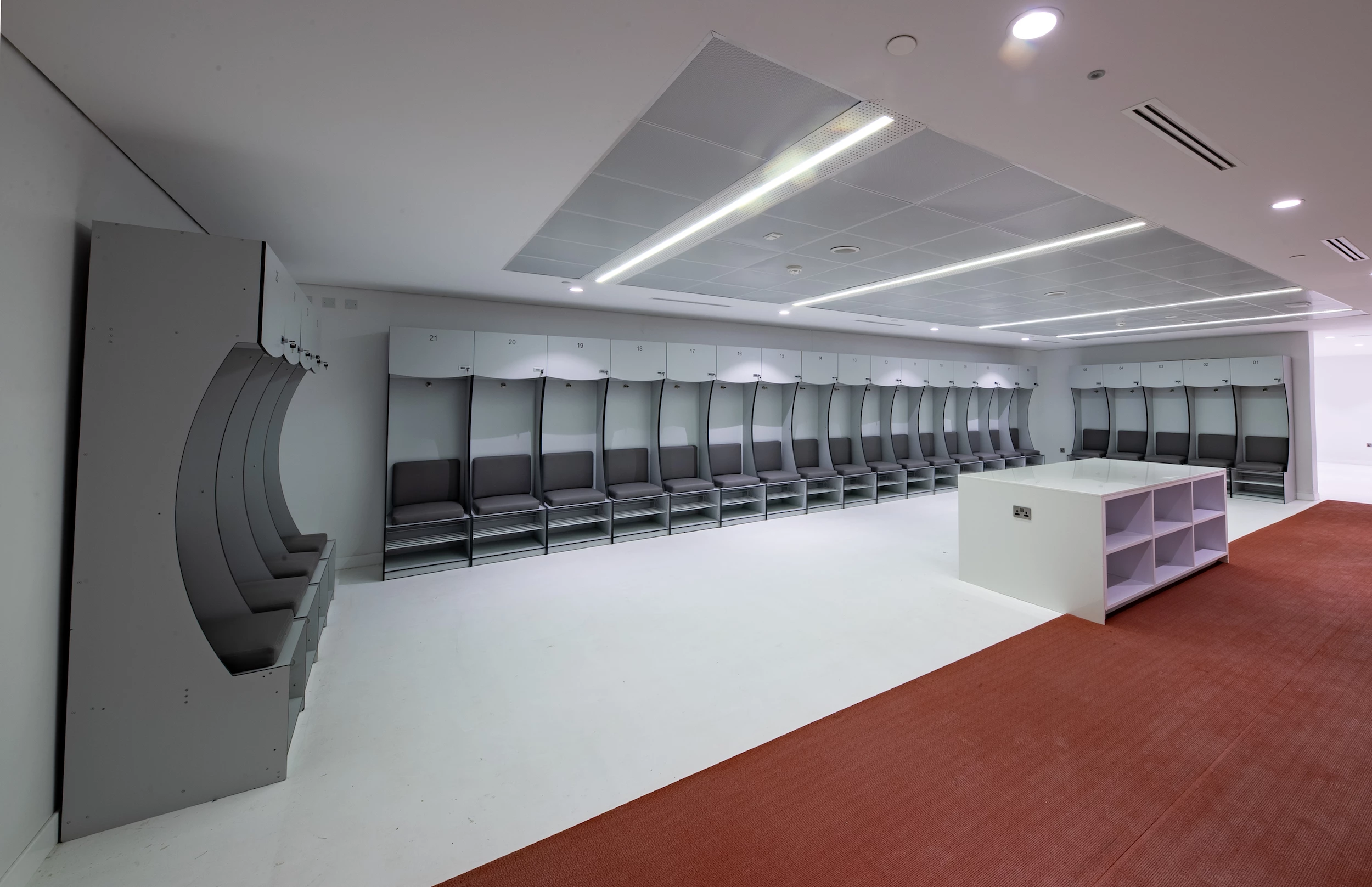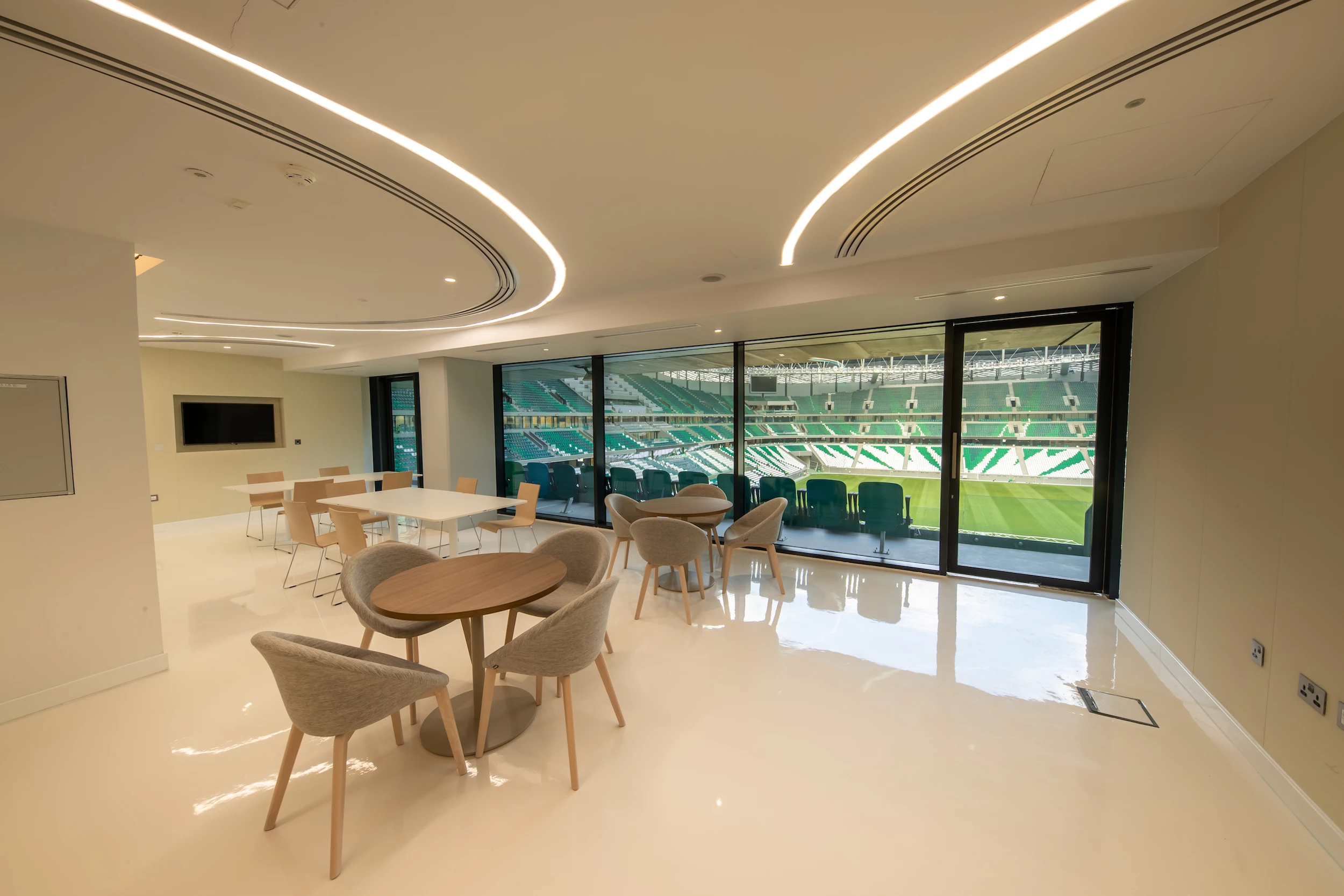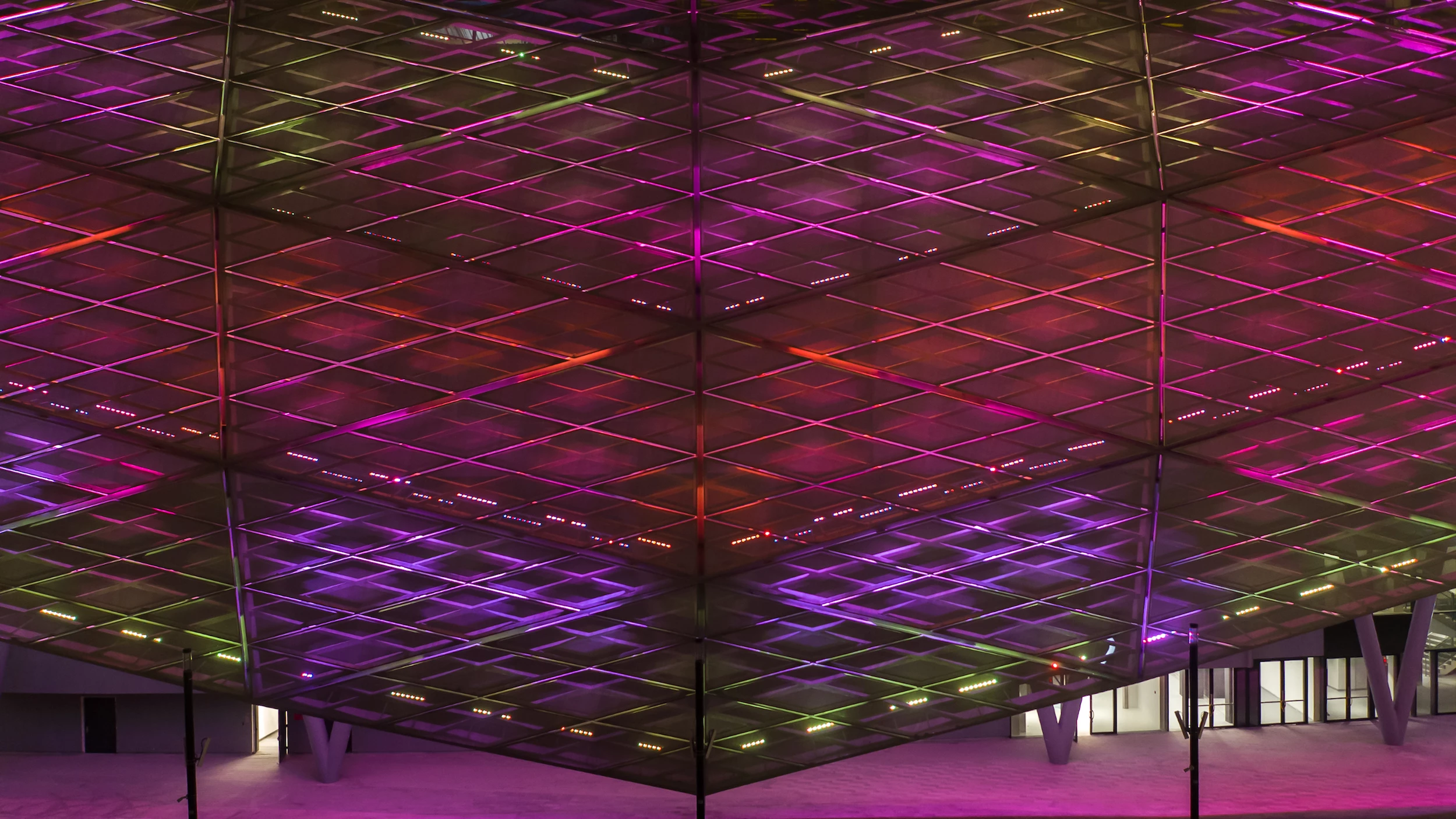Construction has officially been completed on an eye-catching new stadium in Qatar. Created as part of the country's preparation for hosting the 2022 FIFA World Cup soccer tournament, the building features a complex patterned facade that's said to shimmer in sunlight and can also be illuminated with integrated lighting at night.
Nicknamed the Diamond in the Desert, the stadium derives its official title of Education City Stadium from its location next to several university and research buildings in Al Rayyan, west of Qatar's capital Doha. It was designed by Fenwick-Iribarren Architects in collaboration with Pattern Architects, Buro Happold, JPAC JV, and Salfo.
The stadium will host World Cup matches up to the Quarter Final stage, after which its 40,000 capacity will be permanently reduced to 20,000 by removing seating. It features an oval form that's given definition by its metallic facade, which should lend it the shimmering appearance in the right conditions (though admittedly it doesn't look particularly shimmery in the photos provided).
"The facade of the stadium is conceived as a shimmering diamond nestled on a vibrant landscaped podium," explains Pattern Architects. "The faceted nature of the metallic fabric facade has a strong geometric tessellation consisting of diamonds and triangles, which means each panel will reflect different qualities of light, sparkle with different hues, and mirror different aspects of the surrounding site. The movement of the sun throughout the day will animate and transform the appearance of the Stadium, creating an illusion of constant motion, whilst at night its inner glow will emanate out through the facade."
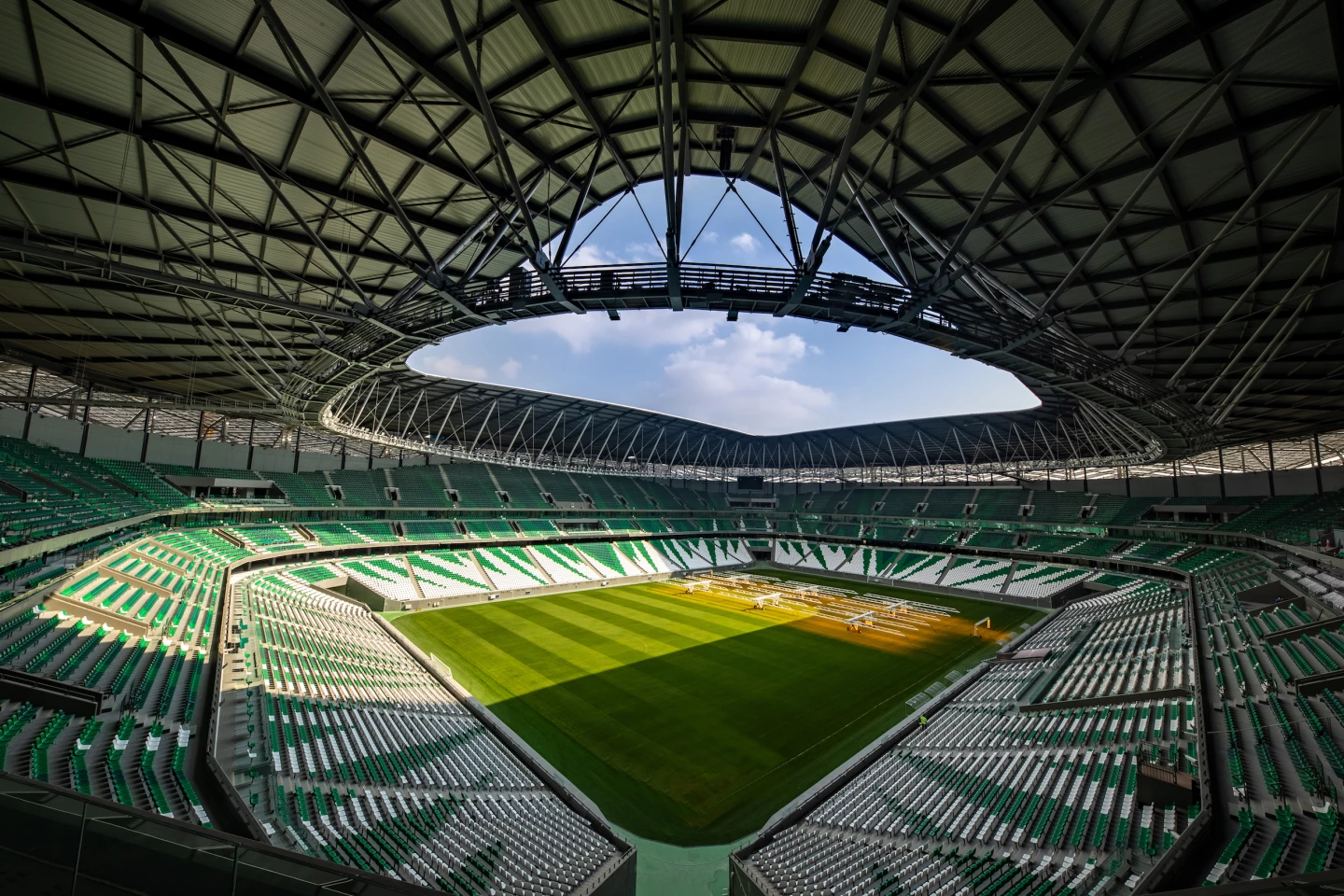
It would be an exaggeration to call the project truly sustainable – Zaha Hadid's wooden stadium is more impressive in that regard – but Education City Stadium did receive a Five Star rating from the Global Sustainability Assessment System (a green building standard) and boasts some sustainable design. For example, 85 percent of the building materials used were locally sourced, while 29 percent were recycled. Additionally, sensors are installed to ensure adequate ventilation and good air quality, and an efficient irrigation system minimizes water use.
There will also be some kind of cooling system to keep fans and players comfortable (the World Cup is being held in late November to late December, so they won't have to contend with the searing summer heat), but Fenwick-Iribarren Architects was unable to give us any further details.

Qatar's 2022 FIFA World Cup effort also includes stadiums by Foster + Partners, Zaha Hadid, and another by Fenwick-Iribarren Architects which has a novel demountable design. The whole thing is a hugely expensive multi-year undertaking, and has faced controversy, not least with regard to worker deaths and their overall conditions, which have been harshly criticized by Human Rights Watch, Amnesty International, and others.
Sources: Fenwick-Iribarren Architects, Pattern Architects, FIFA
